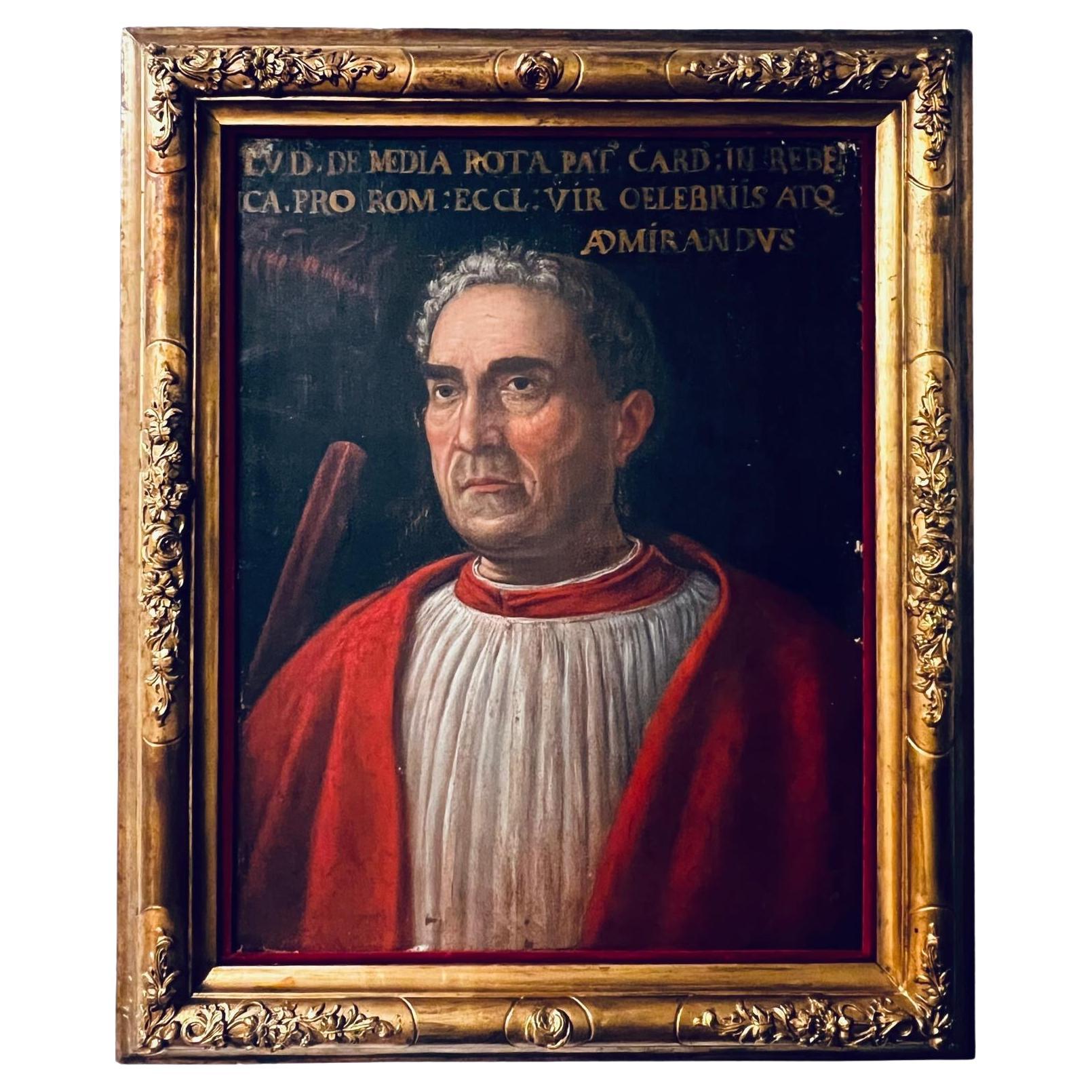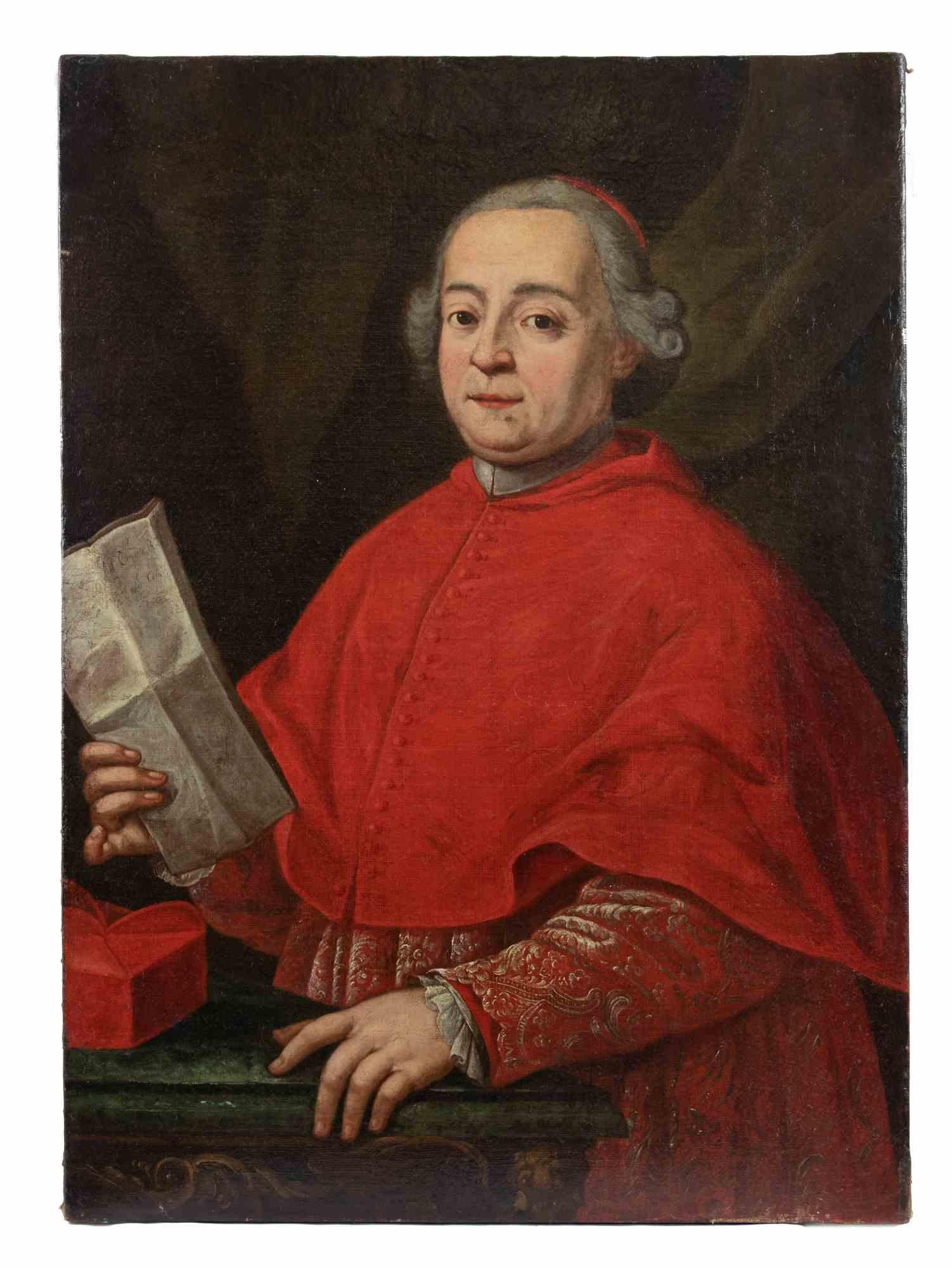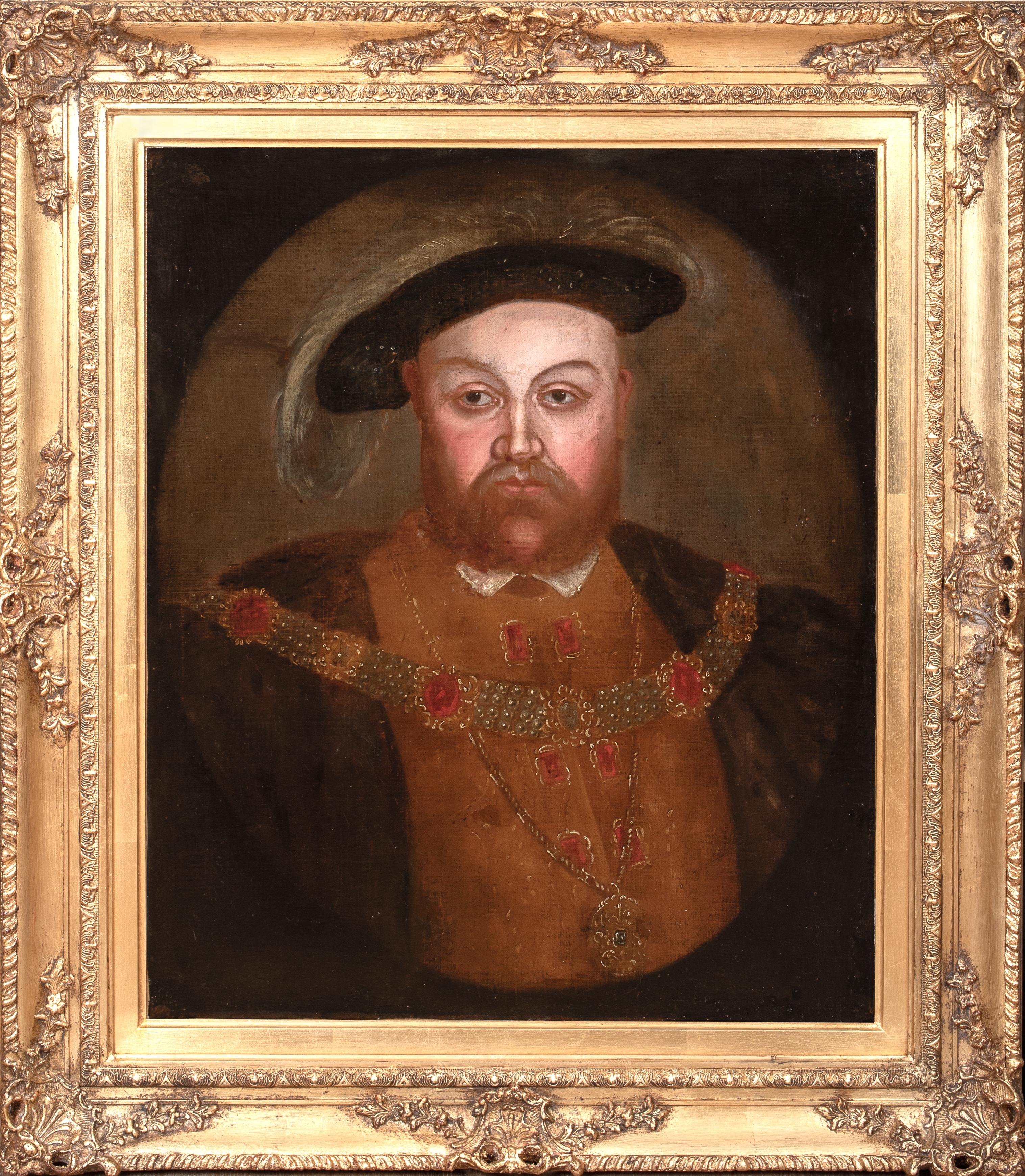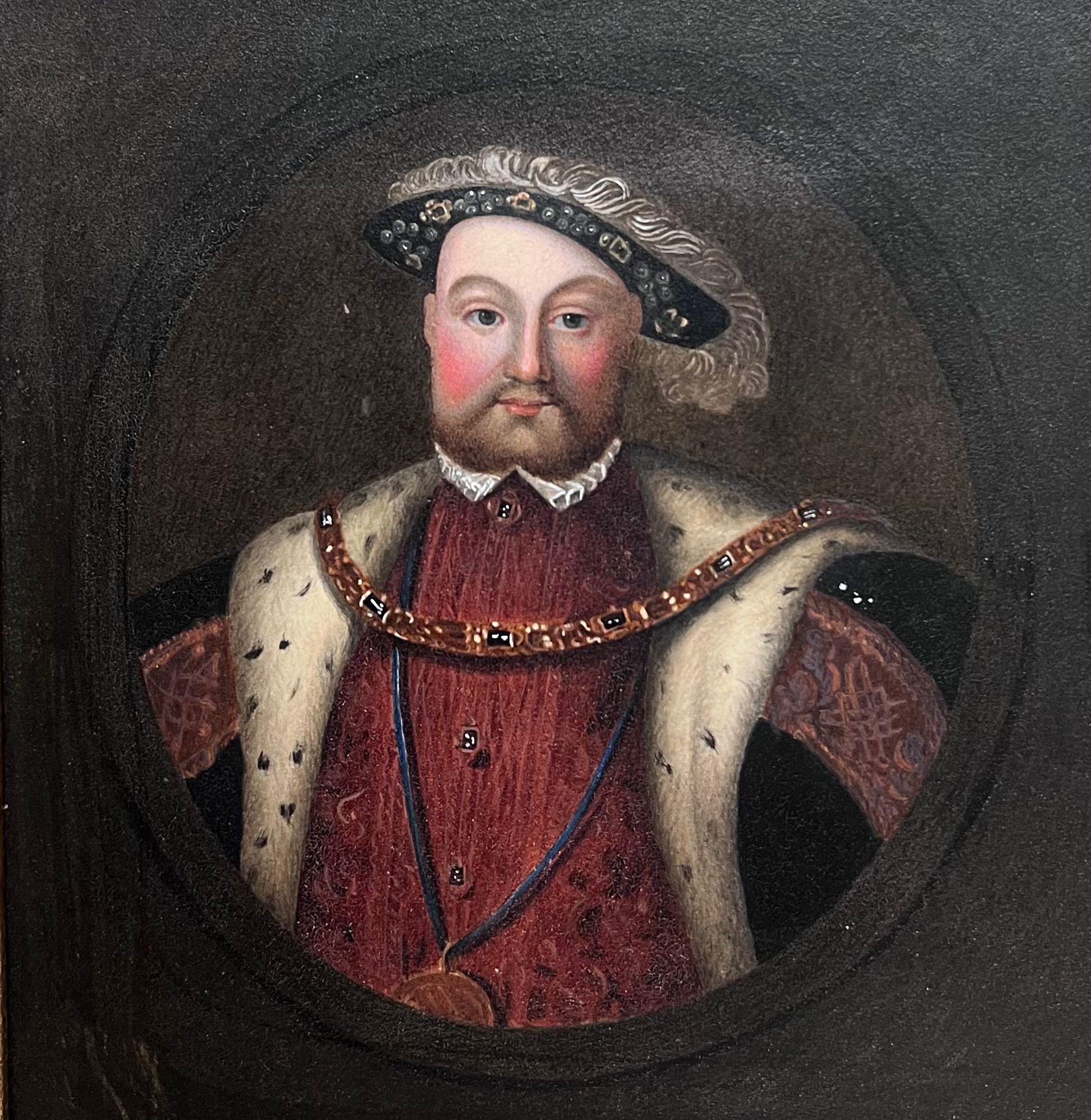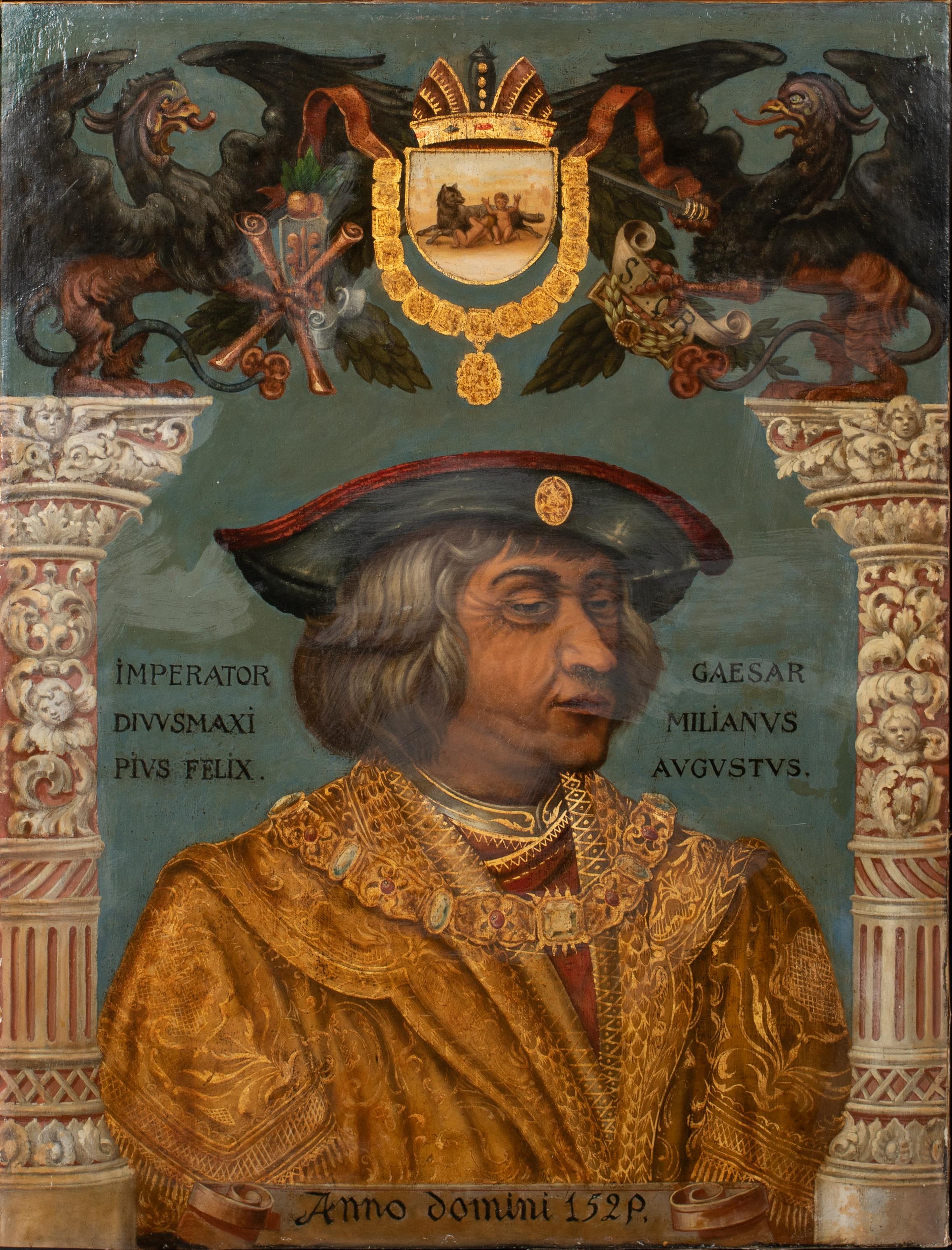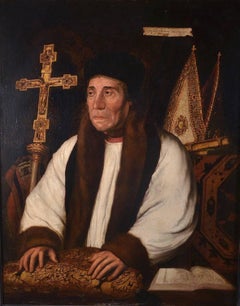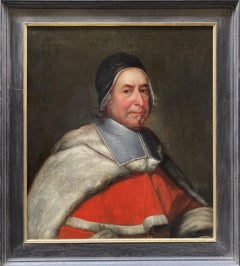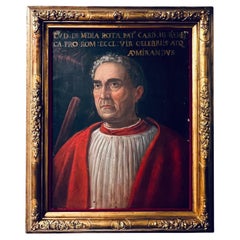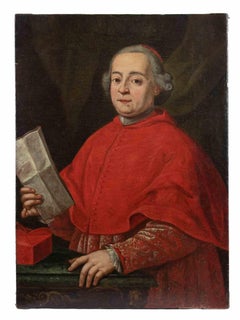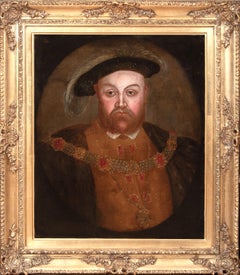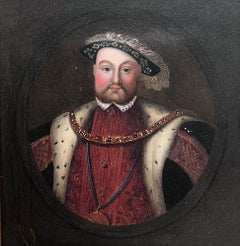Items Similar to Cardinal Thomas Wolsey 16th Century Oil Portrait
Want more images or videos?
Request additional images or videos from the seller
1 of 5
UnknownCardinal Thomas Wolsey 16th Century Oil Portrait
$51,080.96
£37,100
€43,798.91
CA$70,258.90
A$78,148.04
CHF 40,996.35
MX$953,583.68
NOK 514,556.02
SEK 484,906.64
DKK 326,940.30
About the Item
English School
Cardinal Thomas Wolsey
16th Century
Oil on oak panel
Image size: 22 1/4 x 18 inches (56.5 x 46 cm)
Contemporary style frame
Provenance
Tudor Exhibition, New Gallery, 1890. (No. 109)
Exhibition of the Royal House of Tudor, City of Manchester, 1897.
Sothebys, Lot 46, £220, 19.10.1977
Our portrait is an example of the only known portrait type of the Cardinal that derives from a portrait executed in the Cardinal's lifetime. Variants are in the collection of the National Portrait Gallery and at Christ Church, Oxford.
Both of these are datable to c.1600, and though the type is widely disseminated, the original of c.1520 remains untraced. The Cardinal is depicted in profile, a style harking back to early medals and coinage.
Thomas Wolsey, adorned in his iconic red robe and captured in a distinctive side profile, remains one of the most recognisable figures of the Tudor period. His life and career are an insight into the intricate relationship between church and state of the era.
Born around 1473, Thomas Wolsey rose from humble beginnings using his intelligence and administrative talents to become an English statesman and Catholic Cardinal. In April 1508, Wolsey was dispatched to Scotland to discuss rumours of the renewal of the Auld Alliance with King James, an alliance that united Scotland and France against England. This diplomatic operation highlighted Wolsey’s growing influence aw well as his pivotal role in European Politics.
Wolsey’s rise to power coincided with the accession of Henry VIII in April 1509, making a significant shift in the Kingdom’s character, policies and diplomatic approach compared to those of his father. In 1509, Henry appointed Wolsey as almoner, providing him with a seat on the Privy Council and an opportunity to achieve greater prominence, allowing Wolsey to establish a personal rapport with the king. A key factor in Wolsey’s rise was Henry VIII’s initial lack of interest in the details of governance, allowing Wolsey to exercise considerable influence and control over decisions.
By 1514, Wolsey had assumed control over virtually all matters of state. He also held numerous ecclesiastical positions, including Archbishop of York, the second most important role in the English Church, and Papal Legate, the Pope’s representative in England. Later, Wolsey also became the Lord Chancellor, the king's chief advisor, through which he enjoyed considerable freedom and was often referred to the alter rex, meaning ‘other king’.
Despite his significant influence and power, Wolsey’s inability to secure an annulment of Henry VIII’s marriage to Catherine of Aragon led to his fall from favour. Stripped of his government titles, he retreated to York to fulfil his ecclesiastical duties as archbishop - a position he had nominally held but had neglected during his years in government. He was recalled to London to answer charges of treason - charges that Henry commonly used against ministers who fell out of favour-, however, Wolsey died of natural causes en route.
- Dimensions:Height: 22.25 in (56.52 cm)Width: 18 in (45.72 cm)
- Medium:
- Period:
- Condition:
- Gallery Location:London, GB
- Reference Number:1stDibs: LU52415805662
About the Seller
5.0
Vetted Professional Seller
Every seller passes strict standards for authenticity and reliability
Established in 2007
1stDibs seller since 2014
82 sales on 1stDibs
Typical response time: 3 hours
- ShippingRetrieving quote...Shipping from: London, United Kingdom
- Return Policy
Authenticity Guarantee
In the unlikely event there’s an issue with an item’s authenticity, contact us within 1 year for a full refund. DetailsMoney-Back Guarantee
If your item is not as described, is damaged in transit, or does not arrive, contact us within 7 days for a full refund. Details24-Hour Cancellation
You have a 24-hour grace period in which to reconsider your purchase, with no questions asked.Vetted Professional Sellers
Our world-class sellers must adhere to strict standards for service and quality, maintaining the integrity of our listings.Price-Match Guarantee
If you find that a seller listed the same item for a lower price elsewhere, we’ll match it.Trusted Global Delivery
Our best-in-class carrier network provides specialized shipping options worldwide, including custom delivery.More From This Seller
View AllPORTRAIT OF WILLIAM WARHAM, Old Masters Oil on Wood
Located in London, GB
after HANS HOLBEIN THE YOUNGER
1497 – 1543
PORTRAIT OF WILLIAM WARHAM
Oil on canvas
Image size: 38 x 35 inches (89 x 71 cm)
Hand made period style frame
The handling of the paint in...
Category
18th Century and Earlier Old Masters Portrait Paintings
Materials
Canvas, Oil
Portrait of William Herbert, 3rd Earl of Pembroke, Early 17th Century Portrait
Located in London, GB
English School, (circa 1600)
Portrait of William Herbert, 3rd Earl of Pembroke
Oil on panel, oval
Image size: 29¼ x 23⅞ inches
Painted wooden frame
Provenance:
176, Collection of Francis Greville, 1st Earl of Warwick.
The Trustees of the Lord Brooks’ Settlement, (removed from Warwick Castle).
Sotheby’s, London, 22nd March 1968, lot 81.
Painted onto wooden panel, this portrait shows a dark haired gentleman in profile sporting an open white shirt. On top of this garments is a richly detailed black cloak, decorated with gold thread and lined with a sumptuous crimson lining. With the red silk inside it’s all very expensive and would fall under sumptuary laws – so this is a nobleman of high degree.
It’s melancholic air conforms to the contemporary popularity of this very human condition, evident in fashionable poetry and music of the period. In comparison to our own modern prejudices, melancholy was associated with creativity in this period.
This portrait appeared in the earliest described list of pictures of Warwick castle dating to 1762. Compiled by collector and antiquary Sir William Musgrave ‘taken from the information of Lord & Lady Warwick’ (Add. MSS, 5726 fol. 3) is described;
‘8. Earl of Essex – an original by Zuccharo – seen in profile with black hair. Holding a black robe across his breast with his right hand.’
As tempting as it is to imagine that this is a portrait of Robert Devereux, the 2nd Earl Essex, we might take this with a pinch of salt. Its identification with this romantic and fatal Elizabethan might well have been an attempt to add romance to Warwick Castle’s walls. It doesn’t correspond all that well with Essex’s portraits around 1600 after his return from Cadiz. Notably, this picture was presumably hung not too far away from the castle’s two portraits of Queen Elizabeth I. The first, and undoubtedly the best, being the exquisite coronation portrait that was sold by Lord Brooke in the late 1970s and now hangs in the National Portrait Gallery. The second, described as being ‘a copy from the original at Ld Hydes’, has yet to resurface.
The portrait eventually ended up being hung in the State Bedroom of Warwick Castle.
Archival documents present one other interesting candidate. The Greville family’s earliest inventory of paintings, made in 1630 at their home Brooke House in Holborn, London, describes five portraits of identified figures. All five belonged to the courtier, politician and poet Sir Fulke Greville (1554-1628), 1st Baron Brooke, and were hung in the ‘Gallerie’ of Brooke House behind yellow curtains. One of them was described as being of ‘Lord of Pembrooke’, which is likely to have been William Herbert (1580-1630), 3rd Earl of Pembroke. William was the eldest son of Greville’s best friend’s sister Mary Sidney, and was brought up in the particularly literary and poetically orientated household which his mother had supported. Notably, the 3rd Earl was one of the figures that Shakespeare’s first folio was dedicated to in 1623.
The melancholic air to the portrait corresponds to William’s own pretensions as a learned and poetic figure. The richness of the robe in the painting, sporting golden thread and a spotted black fabric, is indicative of wealth beyond that of a simple poet or actor. The portrait’s dating to around the year 1600 might have coincided with William’s father death and his own rise to the Pembroke Earldom. This period of his life too was imbued with personal sadness, as an illicit affair with a Mary Fitton had resulted in a pregnancy and eventual banishment by Elizabeth I to Wilton after a short spell in Fleet Prison. His illegitimate son died shortly after being born. Despite being a close follower of the Earl of Essex, William had side-stepped supporting Devereux in the fatal uprising against the Queen and eventually regained favour at the court of the next monarch James I.
His linen shirt is edged with a delicate border of lace and his black cloak is lined on the inside with sumptuous scarlet and richly decorated on the outside with gold braid and a pattern of embroidered black spots.
Despite the richness of his clothes, William Herbert has been presented in a dishevelled state of semi-undress, his shirt unlaced far down his chest with the ties lying limply over his hand, indicating that he is in a state of distracted detachment. It has been suggested that the fashion for melancholy was rooted in an increase in self-consciousness and introspective reflection during the late 16th and early 17th centuries.
In contemporary literature melancholy was said to be caused by a plenitude of the melancholy humor, one of the four vital humors, which were thought to regulate the functions of the body. An abundance of the melancholia humor was associated with a heightened creativity and intellectual ability and hence melancholy was linked to the notion of genius, as reflected in the work of the Oxford scholar Robert Burton, who in his work ‘The Anatomy of Melancholy’, described the Malcontent as ‘of all others [the]… most witty, [who] causeth many times divine ravishment, and a kind of enthusiamus… which stirreth them up to be excellent Philosophers, Poets and Prophets.’ (R. Burton, The Anatomy of Melancholy, London, 1621 in R. Strong, ‘Elizabethan Malady: Melancholy in Elizabethan and Jacobean Portraits’, Apollo, LXXIX, 1964).
Melancholy was viewed as a highly fashionable affliction under Elizabeth I, and her successor James I, and a dejected demeanour was adopted by wealthy young men, often presenting themselves as scholars or despondent lovers, as reflected in the portraiture and literature from this period. Although the sitter in this portrait is, as yet, unidentified, it seems probable that he was a nobleman with literary or artistic ambitions, following in the same vain as such famous figures as the aristocratic poet and dramatist, Edward de Vere...
Category
Early 17th Century Old Masters Portrait Paintings
Materials
Oil, Wood Panel
Portrait of a Judge, 17th Century English Oil Portrait Painting
Located in London, GB
Oil on canvas, on board
Image size: 30 1/4 x 27 inches (76.75 x 68.5 cm)
Contemporary style handmade frame
This is a attention-holding portrait of a 17th century English judge...
Category
17th Century English School Portrait Paintings
Materials
Oil, Board
Portrait of King Edward VI, Oil on panel with Gold Leaf, 18th Century English
Located in London, GB
Oil on oak panel
Image size: 25 1/2 x 19 inches (37.5 x 27 inches)
18th Century Auricular gilt frame
Provenance
New York private collection
This portrait of the King Edward VI depicts the boy-king standing in a black and gold embroidered doublet, wearing a jewelled cap. King Edward holds a staff with a globus cruciger set on the table beside him. No expense has been spared in the making of this piece, with gold leaf being applied in many areas to give the effect of the costume's gold embroidery, chain of office and other metal accessories.
As the precious male heir to the Tudor dynasty...
Category
Early 18th Century English School Portrait Paintings
Materials
Gold Leaf
Portrait of Nicholas Poyntz
Located in London, GB
Remigius Van Leemput
Portrait of Nicholas Poyntz
1607-1675
Oil on oak panel
Image size: 13 x 10 1/4 inches (33 x 26 cm)
Contemporary style frame
Provenance
The Dalva Brothers Colle...
Category
17th Century Flemish School Portrait Paintings
Materials
Oil, Panel
Portrait of an Officer, Cornelius Johnson, 17th Century Old Masters
By Cornelius Johnson
Located in London, GB
Circle of Cornelius Johnson
Circa 1620’s
Portrait of a Officer
Oil on canvas
Image size: 28 x 24 inches
Period style hand made frame
Provenance
Private European Estate
This striking portrait dates to around 1620, as you can see from the images of the sash the detail is very high. The sash is decorated with gold thread and would have cost a small fortune at the time. Sashes were originally developed for a military function (making officers more visible for their men during combat), but soon became a primarily male fashion...
Category
Early 17th Century Old Masters Portrait Paintings
Materials
Oil
You May Also Like
Antique Venetian Renaissance Cardinal Ludovico Trevisan 1401-1465 Oil on Canvas
Located in Doha, QA
Ludovico Trevisan (November 1401 Venice, Italy - 22nd of March 1465) was an Italian Catholic prelate, who was the Camerlengo of the Holy Roman Church, Patriarch of Aquileia and Capta...
Category
Antique 15th Century and Earlier Italian Renaissance Paintings
Materials
Canvas, Wood
Cardinal with Missive - Painting by Unknown - 17th Century
Located in Roma, IT
Cardinal with missive is an original old master artwork realized in the 17th Century.
Mixed colored oil painting on canvas. Provenance: Italy. Avery precoius artwork depicting a ca...
Category
17th Century Old Masters Figurative Paintings
Materials
Oil
Portrait Of King Henry VIII (1491-1547), 17th Century Royal Court Portrait
Located in Blackwater, GB
Portrait Of King Henry VIII (1491-1547), 17th Century
English School Royal Court Portrait
Large 17th Century English Royal Court Portrait of King Henry VIII Of England, oil on canv...
Category
17th Century Portrait Paintings
Materials
Canvas, Oil
$6,058 Sale Price
20% Off
Portrait King Henry 8th VIII Antique English Painting Famous Monarch
Located in Cirencester, Gloucestershire
King Henry VIII
English artist, circa 1840's
oil on paper laid on board, framed
framed: 10.5 x 10inches
board: 8 x 7.5 inches
inscribed verso
provenance: private collection, UK
cond...
Category
Early 19th Century English School Portrait Paintings
Materials
Oil
Portrait Of Maximilian I Holy Roman Emperor & Archduke of Austria, 17th Century
Located in Blackwater, GB
Portrait Of Maximilian I Holy Roman Emperor & Archduke of Austria, 17th Century
follower of Giulio Romano (1492-1546)
Fine large 16th Century Italian S...
Category
17th Century Portrait Paintings
Materials
Oil, Canvas
$6,498 Sale Price
20% Off
Italian Large Renaissance Nobleman Portrait
Located in Douglas Manor, NY
4069 Italian nobleman oil painting
unframed
Category
1960s Portrait Paintings
Materials
Oil
More Ways To Browse
Altered Portrait
16th Century England
Antique Catholic Art
Henry Viii
Tudor Rose
Red Cardinal
Dior Christal
16th Century Oak
16th Century Scotland
Antique Catholic Painting
Antique Exercise
Christ Icon
Antique Advisor
Paintings By Thomas King Original
Christ The King
16th Century Tudor
Christ Church Oxford
John Romney
